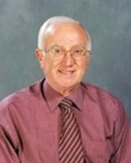Len Almond
In the process of developing a classification[1] of different games in order to understand their similarities and differences, it became clear that this analysis provided also a means to sample the vast range of games available to us. Even similar game types provide a richness of very different experiences. This meant that teachers could make a judgment about the types of games they wanted to make accessible to their students and ensure that there was a sense of balance in these rich experiences rather than a selection of games based on teacher preferences. It reinforced the idea that young people need to understand what a game is all about and what games have to offer.
As a result, the TGFU team promoted the idea that teachers use this concept to create a balance in the way that the games experience was constructed and also to cater for different interests and aptitudes. It was believed also that by using the TGFU approach young people would gain an insight into other games of the same type and encourage them to try them.
Terry Williamson who devised a multi-game approach in primary schools expanded the single game approach. In one lesson he would utilise 3 games from one classification (invasion) and use the principles of play to devise game forms in a modified format. In this way, the primary children experienced far more games than one single game followed by another. This became standard practice in the different local authorities where he was the Physical Education Advisor. There is much to learn from this thinking.
In addition to sampling the richness of experiences in games, the TGFU team believed that young people should be involved in self-directed learning. This was based on an experiment with students. I wanted to see if they could devise their own games and to appraise the exercise as a tool for assessing their understanding of games – the role of rules, principles of play, how to change the game to make it better (secondary rules), what is acceptable conduct and how can we enhance the quality of the game: it was successful. It achieved our expectations and the students’ felt that this approach should be developed in schools so that all young people had an opportunity of devising their own games.
So games making emerged as a key part of TGFU because it enabled us to assess young people’s understanding of games and gave them an opportunity to construct their own games, demonstrate them for other students and it created a positive activity for morning and lunch breaks (recess). Young people can be exceptionally creative and inventive if they are given the opportunity and freedom to explore ideas. At the same time, it opened up our eyes to the need for creating enabling environments to scaffold this process and understand how constraints (the kind of equipment selected and playing space used) can generate very different outcomes.
In the late 1970s Examination courses in Physical Education emerged and they have become established academic modules in schools and colleges. As games represent a significant part of Physical Education and TGFU was embedded in the National Curriculum they provided a good opportunity to link practice and theory. For example, students could use videos of different types of games to examine the similarities and differences of different games within a category (e.g. invasion) and between categories. The potential of this work has not been fully recognised but many schools have demonstrated what can be achieved. A word of caution, this suggestion should not be seen as a replacement for Physical Education lessons but only as an addition to the practical focus of games.
A “Sport Education’ games approach provides a similar opportunity to involve young people in their own learning and take responsibility for management, coaching, organisation and officiating. It situates learning in a real context and has the potential to arouse their enthusiasm, commitment, their drive to do things differently and experience real education without teachers telling them what to do.
In the 1980s there was a movement to develop Leadership courses for students in schools led by Bob Laventure (Coventry) and Bernard Dickenson (Sandwell). The schools provided lessons in which students could learn how to become leaders and facilitate the opportunity to work with younger students in learning to play games. Opportunities arose in intra-mural competitions, local community clubs and in liaison with local primary schools. It was this trial that led to the development of a national scheme to promote leadership programme and increase the involvement of young people in playing more games.
In outlining these approaches I am suggesting that there is potential in exploring and generating very different curriculum opportunities for developing a games education. Schools can make available a wide and varied set of experiences for:
- A balanced programme of different game experiences
- The opportunity for young people to create your own games
- Games Leadership schemes
- Creating links with Sport Education
- Examination based Games Curriculum (theory and practice) as an additional part of Physical Education.
There must be many different examples of innovative teaching and the creation of different games experiences so why don’t we build a repertoire of ideas that other teachers can draw on. We can all learn from each other.
[1] Reflecting on Themes: a Games Classification (Len Almond) in Rethinking Games Teaching (1986) Thorpe, Bunker and Almond p.71-72.




